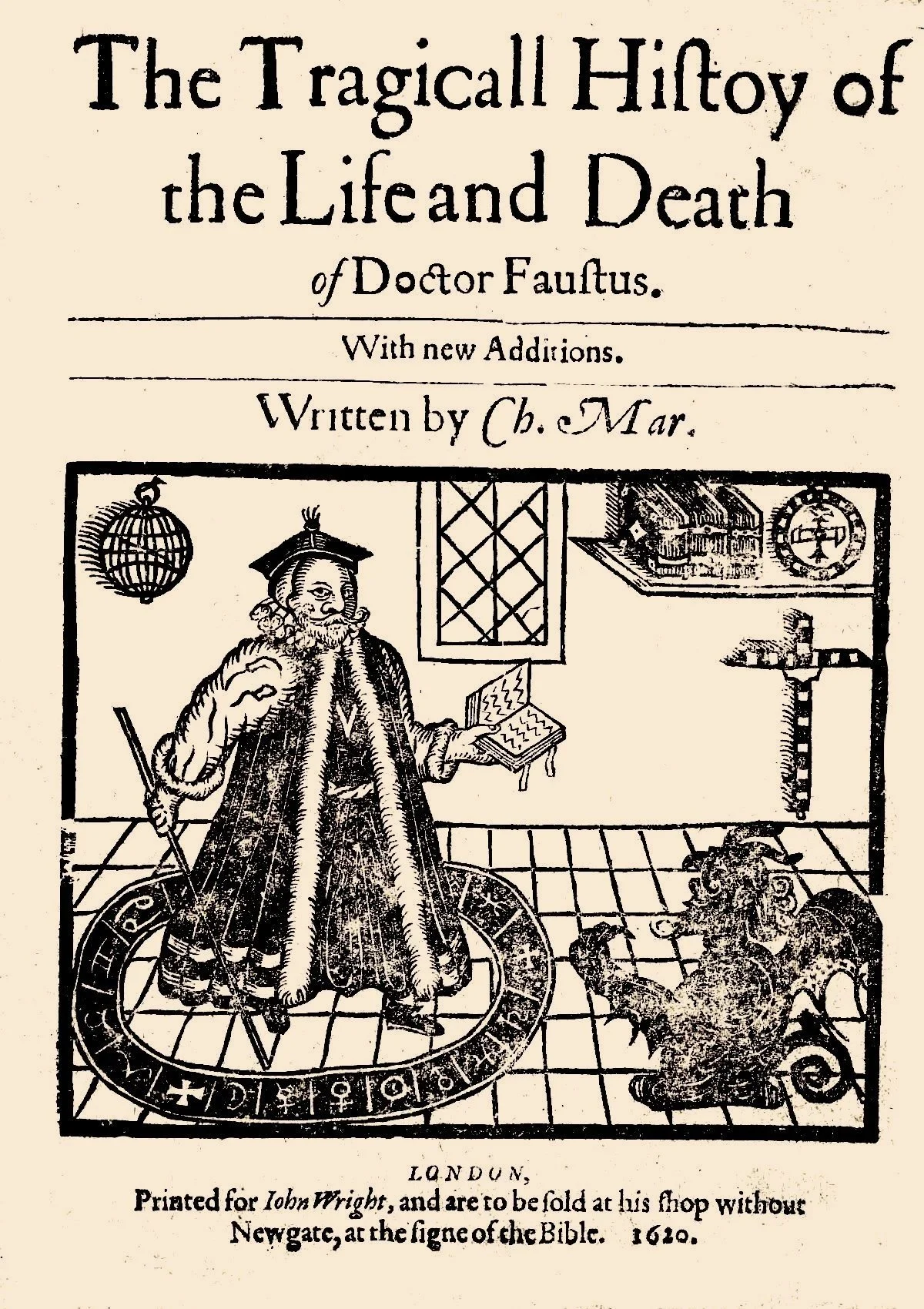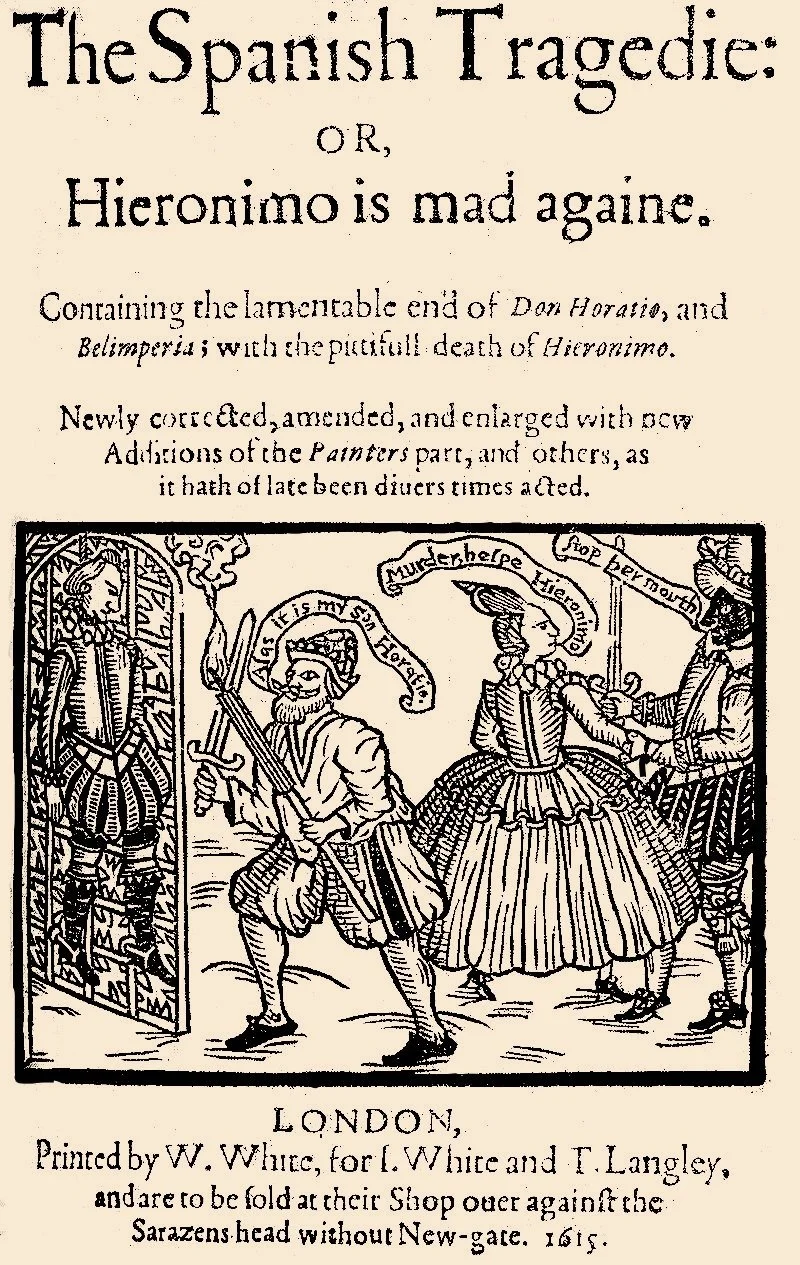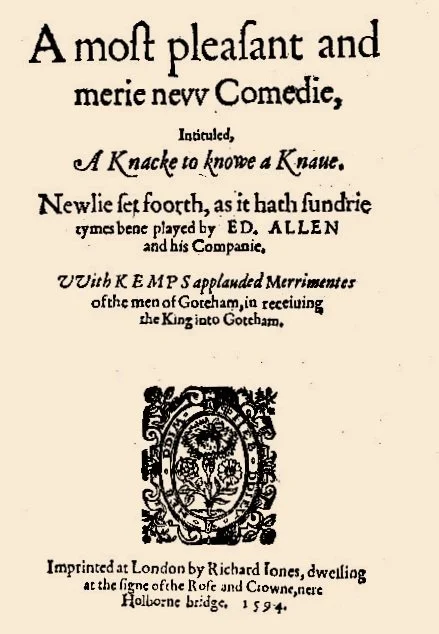Plays & Playwrights
We know from Henslowe’s Diary that The Rose’s repertoire included Christopher Marlowe’s Tamburlaine, Doctor Faustus and The Jew of Malta, and Thomas Kyd’s The Spanish Tragedy – the most popular and influential play of the entire Elizabethan period.
Doctor Faustus
by Christopher Marlowe
sixth quarto, 1620
The Spanish Tragedy
by Thomas Kyd
fifth quarto, 1615
A Knack to Know a Knave
author unknown
1594 quarto
Just over thirty of the plays that are recorded as having been performed at The Rose survive in print, along with another twenty that were also probably or possibly acted there.
These include plays by other popular playwrights of the time, such as George Peele, Robert Greene, Thomas Lodge and Thomas Nashe, all of whom wrote for The Rose in its first years.
These were, however, uncertain and dangerous times…
In 1592, Robert Greene managed to drink himself to death at the age of just 34, reportedly after a ‘surfeit of Rhenish wine and pickled herring’.
Marlowe was only 29 years old when he was killed in mysterious circumstances the following year, in 1593, during a knife fight in Deptford. A year later, in 1594, his former room-mate, Thomas Kyd, died a broken man at the age of 35, following likely imprisonment torture.
George Peele was 40 years old when he died after being struck down with ‘the pox’ (another word for the plague) in 1596.
In that same year, Lodge converted to Catholicism, eventually spending part of his life in exile. Nashe, who had turned most of his energies towards writing pamphlets and poems, only narrowly avoided prison after his play The Isle of Dogs was banned in 1597. By 1601 he too was dead, aged 33 or 34.
Michael Drayton
by unknown artist
oil on panel, 1599. NPG776
© National Portrait Gallery, London
Ben Jonson
by Abraham van Blyenberch
oil on canvas, circa 1617. NPG2752
© National Portrait Gallery, London
From 1596, Henslowe’s Diary records a new generation of young dramatists writing regularly for The Rose.
They included Michael Drayton, Thomas Dekker, Anthony Munday, Henry Chettle, John Day, Thomas Heywood, George Chapman, and Ben Jonson.
Together, they would go on to dominate the London stage for the next 30 years.
Shakespeare & The Rose
William Shakespeare
The Chandos portrait
Associated with John Taylor
oil on canvas, circa 1610. NPG1
© National Portrait Gallery, London
William Shakespeare’s involvement with The Rose – both as an actor and as a playwright – came at the very beginning of his career.
The earliest surviving records of any of his plays are to be found in Philip Henslowe’s Diary.
In it, Henslowe records takings of £3 and 8 shillings he received for a performance by Lord Sussex’s Men on Thursday 24 January 1594 of a play he called “titus & ondronicus”. There’s little doubt that this refers to Shakespeare’s Titus Andronicus, his first tragedy, written in collaboration with the older, more experienced playwright George Peele.
A second performance followed the next week, on Tuesday 29 January, where Henslowe took £2 (worth very roughly about £2,000 in today’s money). He received the same amount again when the play was acted for a third time the week after that, on Wednesday 6 February.
That same day Titus was entered into the Stationer’s Register, and was published later that year. Just one copy of this first quarto edition of the play now survives, and was only rediscovered – to general amazement – in the possession of a postal worker in Sweden in 1904. It is now in Washington, D.C., in the Folger Shakespeare Library.






